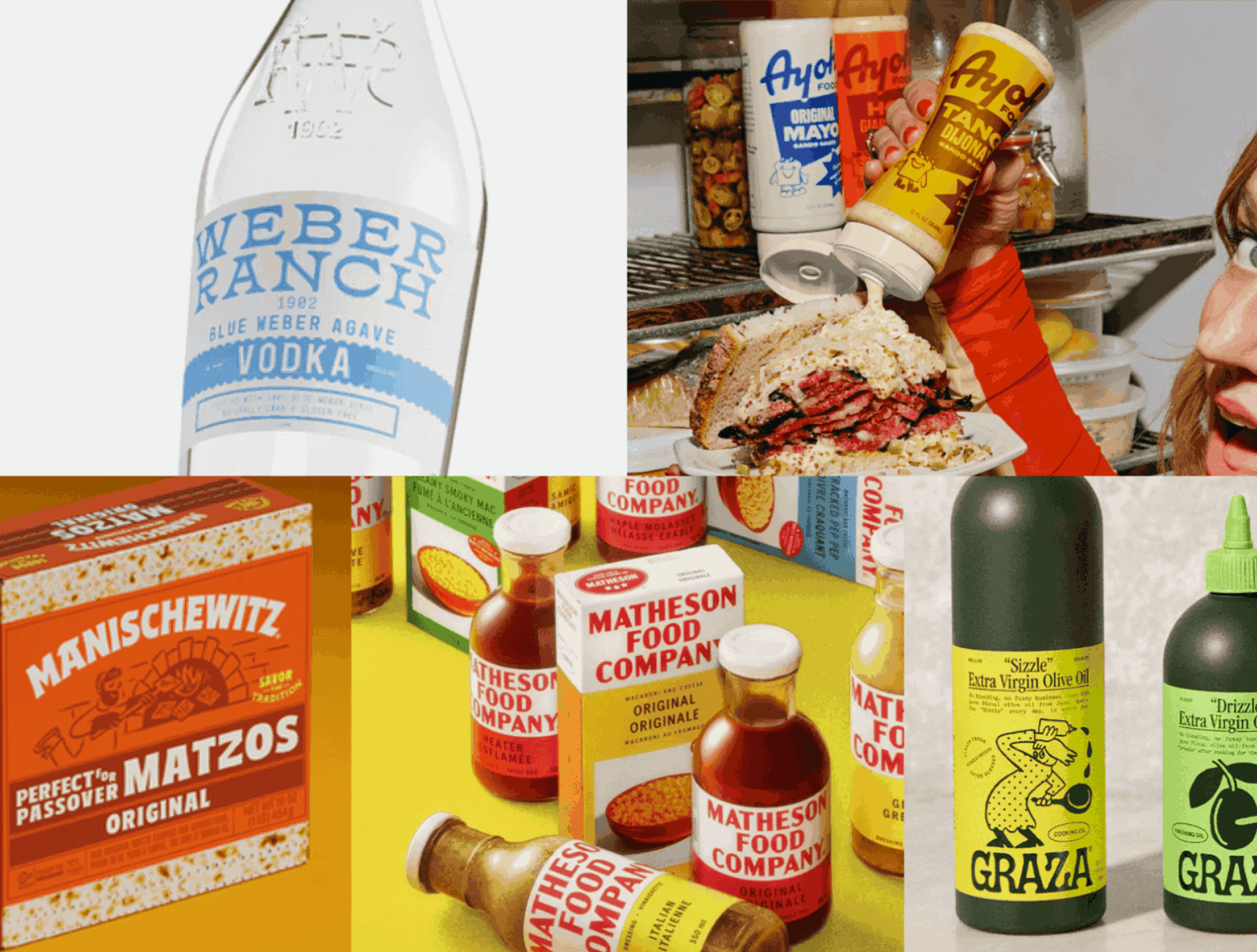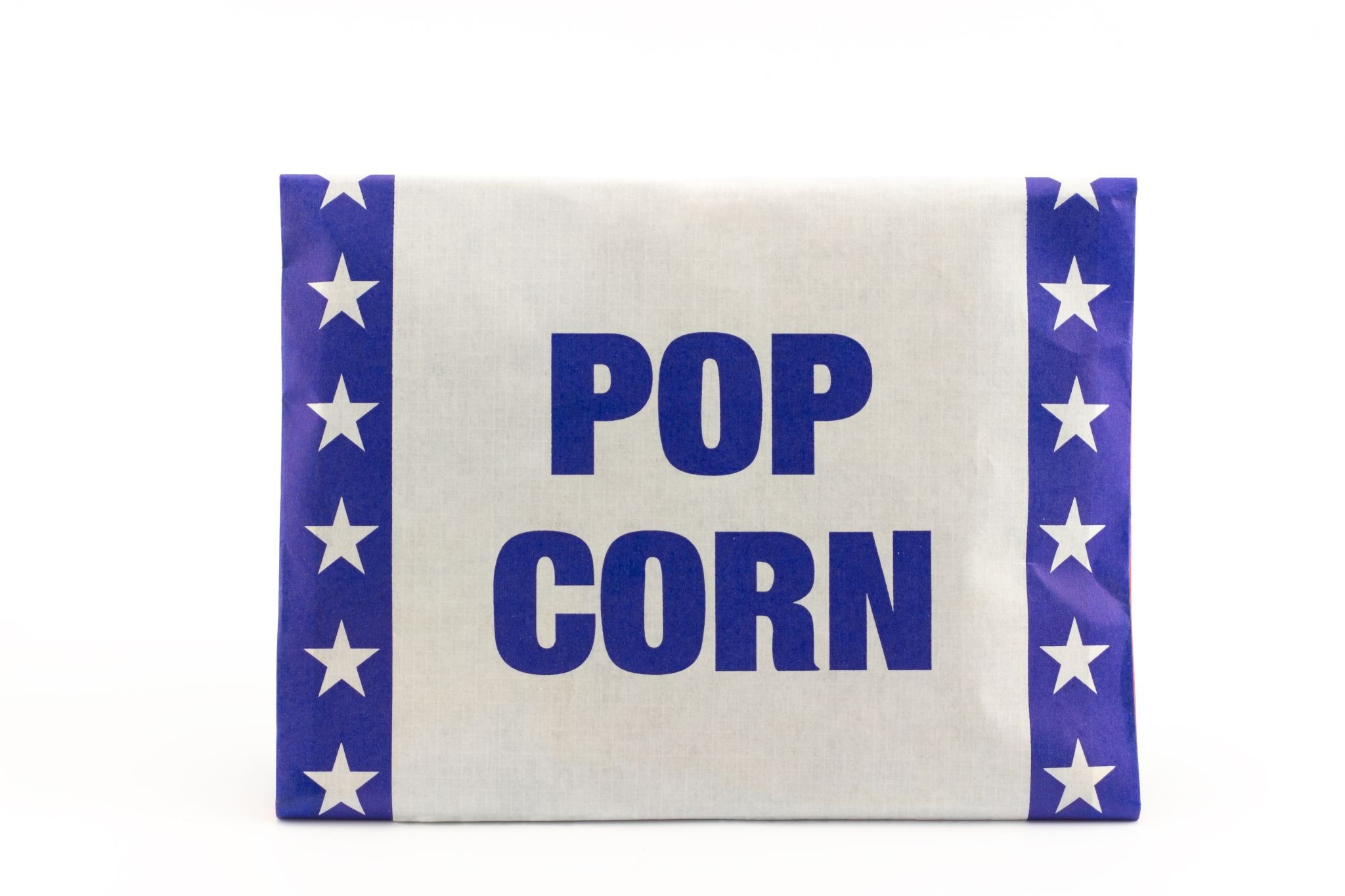In the competitive world of consumer packaged goods (CPG), your product has approximately three seconds to capture a shopper's attention. Within this fleeting moment, typography and visual hierarchy play pivotal roles in determining whether your product stands out or gets lost among countless alternatives on crowded retail shelves.
Read MoreWhat are some common design mistakes you see on the retail shelf?
“Designing packaging for retail shelves is both an art and a science. It’s not just about looks; it’s about capturing attention, telling the right message, and ultimately driving sales.”
Read MoreBrand Style Guide for CPG Food and Beverage Businesses
Because your brand deserves to make a cohesive first (and second, and hundredth) impression.
Let’s be real—branding isn’t just about looking good anymore. It’s about showing up consistently, no matter where your audience finds you. On Instagram. In their inbox. On the shelf. At a trade show. And if each of those touchpoints feels like it’s coming from a different planet? You’ve got a style problem.
That’s where a brand style guide becomes your secret weapon.
At Eye Candy Design, we work with CPG brands who know that great design is only great if it works across the board. Whether you're a start-up growing fast or an established brand expanding your line-up, here’s how to build a brand style guide that keeps everything aligned—without making things rigid or robotic.
The Core Components of a Brand Style Guide
Let’s start with the basics. Your style guide should house the essential elements of your brand identity—plus direction on how to use them in context.
Logo Guidelines
Your logo needs consistency to build recognition. Your guide should include:
Primary and alternate logo variations (horizontal, stacked, icon-only)
Clearspace and minimum size
Approved usage on light/dark backgrounds
What not to do (distortions, drop shadows, or rogue colors—we see you)
Color Palette
Color is a cornerstone of brand recognition. Your guide should specify:
Primary and secondary brand colors
Accent tones for callouts or seasonal use
HEX, CMYK, RGB, and Pantone values
Color usage ratios (because less is often more)
A good rule of thumb? Think of your palette as a cast of characters. Your main colors are the leads. Accent colors? Supporting roles. And neutrals? The set designers keeping it all grounded.
Typography
Fonts do more than carry words—they carry tone. Your guide should clearly define:
Brand fonts and their hierarchy (headline, subhead, body, captions)
Line height, letter spacing, and formatting standards
Substitutions for web vs. print vs. Google-friendly fonts
Accessibility considerations (because legibility is non-negotiable)
Imagery & Iconography
Visuals make your brand feel alive. This section of the guide should cover:
Preferred photography style (editorial, lifestyle, flat lay, etc.)
Image treatments (filters, color grading, overlays)
Illustration or icon styles (line weight, fill, animation)
Stock image guidelines (what’s okay—and what’s definitely not)
Platform-Specific Style Standards
Your brand doesn’t just live in one place. It lives everywhere. So your style guide should meet your platforms where they are.
Social Media Guidelines
No, a Canva file named “final_final_really_final” doesn’t count.
A great social section should include:
Story/post ratios and layout templates
Highlight icon styles and grid spacing
Image vs. text balance
Tips for accessible design (contrast, font size, alt text)
Brand hashtag strategy and emoji tone, if relevant
Your Instagram should feel like a curated magazine. Your TikTok? An extension of your vibe. Your Pinterest? A visual love letter to your aesthetic.
Website Components
Web is often your first impression. Make it count by setting consistent styles for:
Button colors and hover states
Header and footer formats
Link styles (underline or not? Bold or subtle?)
Blog templates and image treatment
Calls to action and inline graphics
Remember: your website should feel like the digital version of your packaging.
Print Assets
Print is tactile, permanent, and wildly underestimated. Don’t wing it.
Your print section should include:
Business card templates (front/back layout, info placement)
Brochure and sell sheet dimensions and folds
Trade show materials (banners, signage, table skirts)
Label formats and dieline tips
Include links to editable design files or print-ready PDFs when possible to keep things frictionless.
Version Control & Governance
Even the best brand guide is only as good as how it’s managed. A few best practices to keep your style guide useful (and used):
Versioning
Clearly label your guide versions (v1.0, v2.3, etc.)
Track who made updates and when
Archive old versions (but don’t delete—trust us, someone will ask)
Accessibility
Host your guide somewhere accessible to your internal team and external partners (designers, writers, printers, freelancers).
Tools we love:
Dropbox or Google Drive (for easy updates and sharing)
Zoom walkthroughs (for onboarding new team members)
Governance
Designate a brand steward (internal or external) who can answer questions, keep the guide up to date, and make judgment calls when new use cases arise.
Audit & Compliance: Making Sure It’s Working
Once your guide is live, it’s time to treat it like a living document—not a dusty old PDF.
Brand Audit
Every 6–12 months, do a brand audit. Look at:
Social feeds
Product packaging
Sales materials
Email templates
Website components
Are they aligned? Are they on-brand? Are they... kind of all over the place?
Checklists & Scorecards
Create a simple brand scorecard to rate new assets before they go out the door. Ask:
Does it follow our colour and font guidelines?
Is our logo used correctly?
Is the tone aligned with our brand voice?
Does it look like us?
It’s not about nitpicking—it’s about making your brand as strong, memorable, and magnetic as possible.
Wait—What’s the Difference Between a Brand Identity Guide and a Style Guide?
Great question. The two are related, but they’re not the same.
Brand Identity Guide: This is your high-level roadmap. It outlines your brand’s visual and verbal DNA—things like your logo variations, colour palette, typography, tone of voice, and overall vibe. It’s the what and why of your brand.
Brand Style Guide: This is your tactical playbook. It’s about how to bring your brand identity to life across specific platforms. Think: How should our Instagram graphics look? What fonts are okay for web headers vs. printed brochures? What are the do’s and don’ts for email design?
In short: your identity guide sets the rules, and your style guide shows how to play the game (and win).
Final Thoughts: When Everything Clicks, Magic Happens
A strong brand style guide isn’t about limiting creativity—it’s about unlocking it. When everyone knows the rules, they can focus on telling your story in a way that’s aligned, intentional, and beautiful.
You deserve a brand that looks just as good across platforms as it does on your hero product. Whether you're building a guide from scratch or refining an existing one, we're here to help make the process clear, collaborative, and dare we say... fun!
You can check some of the brand style guides we love here!
Looking for a brand style guide that actually gets used?
We design visual systems that bring clarity, consistency, and beauty to every brand touchpoint—from shelf to screen. Let’s build something worth showing off. Get in touch →
Brand Archetypes: Which One Is Right for Your CPG Product?
In a crowded marketplace where consumers are constantly bombarded with choices, your brand needs more than a well-designed logo or clever tagline to stand out. It needs a soul. That’s where brand archetypes come in. Rooted in psychology and storytelling, brand archetypes provide a framework for creating authentic, emotionally resonant brands that connect with consumers on a deeper level. For CPG (consumer packaged goods) brands, especially, defining your brand archetype can help shape your voice, visuals, and customer experience—ultimately influencing buyer behaviour and brand loyalty.
Read MoreExploring the Top CPG Packaging Design Trends of 2025: A Comprehensive Guide
In today’s competitive market, packaging is far more than just a container for products—it is the first impression, a brand’s silent ambassador, and a powerful tool for engaging consumers. As we move into 2025, several key trends are reshaping how consumer packaged goods (CPG) are designed and marketed. This post delves deep into the latest trends from sustainability and smart technology to disruptive “chaos packaging” and sensory experiences. Whether you’re a brand looking to reinvent your packaging or a marketer seeking to improve your SEO ranking, this guide will provide actionable insights and creative inspiration.
Read MoreThe Real Life of a Packaging Designer: The Glamour, The Grind, and Everything In Between
When people think about the world of packaging design, the first images that come to mind are often those of stunning visuals, brilliant creativity, and the glamorous end products that make it to store shelves. But behind the eye-catching designs and viral branding moments lies a day-to-day reality that’s as challenging as it is rewarding. Today, we’re pulling back the curtain to share not just the highlight reel but the full, unfiltered journey of a packaging designer—glamour and all.
Read MoreHow to Choose the Right Materials for Your Packaging Project
Packaging is more than just a container—it’s the first impression your product makes, and it plays a vital role in protecting and presenting your brand. But with so many material options available, choosing the right one can feel overwhelming. In this post, we’ll break down the process in a human, straightforward way.
Read MoreHow to Balance Creativity and Functionality in Packaging Design
In today’s highly competitive marketplace, packaging design is more than just wrapping a product—it’s an essential part of your brand identity and consumer experience. As a packaging designer, you’re constantly challenged to strike a balance between creativity and functionality. Creative designs capture attention and communicate brand values, while functional packaging ensures that products are protected, accessible, and user-friendly. In this post, we’ll dive deep into strategies and best practices for merging artistic innovation with practical design elements to create packaging that stands out on the shelf and delivers a superior user experience.
Read MorePhoto by Balázs Kétyi on Unsplash
Choosing a Designer: Beyond the Portfolio
Engaging a designer is an important decision—one that can feel like a leap of faith. You’re entrusting them with your brand’s visual identity, marketing collateral, website, or packaging. Naturally, you want to ensure they’ll create something impactful that aligns with your business goals.
Read MoreThe Power of Packaging: Why Clarity Matters
We've all seen packaging that makes us do a double take. Sometimes it's funny, sometimes it's confusing, and sometimes it's just plain unfortunate. The image above? A prime example of what happens when messaging goes awry. "Tastes Like Grandma"—yikes! Not exactly the comforting, homemade jam experience they were going for.
Read MoreTop 5 Packaging Designs of 2024: Innovation, Nostalgia, and Unbridled Creativity
In a world where first impressions are everything, packaging design has evolved far beyond merely protecting products—it now tells stories, evokes emotions, and cements brand identities. The year 2024 has been a veritable playground for creative minds, with brands pushing the envelope in ways that blend functionality, innovation, and a deep sense of nostalgia. From reimagining heritage icons to infusing modern flair into everyday products, the top packaging designs of 2024 are setting new benchmarks for how brands engage with consumers. Today, we’re thrilled to share Amanda DeVries RGD’s curated selection of the five most exciting packaging designs of the year. Let’s dive into these inspiring creations and explore what makes them so uniquely compelling.
Read MoreThe Importance of Clarity in Branding: Product Over Logo
In the competitive world of consumer goods, convincing shoppers to switch brands is no easy feat. Breaking their established routines and persuading them that your product is the superior choice requires a strategic and deliberate approach.
However, many brands unintentionally hinder their own success by prioritizing aesthetics over essential information. Too often, we see visually striking logos dominating packaging, overshadowing the product name and key details that consumers rely on to understand what they’re buying.
Read MoreCanadian Food Packaging Claims: Navigating the CFIA Maze
You’ve created an amazing new product—maybe it’s low-carb, high in protein, or packed with unique minerals. Naturally, you want to highlight these benefits on your packaging. But before you sell in Canada, it’s essential to understand the regulations set by the Canadian Food Inspection Agency (CFIA).
Read MoreDoes Sustainable Packaging Truly Drive Sales, or Is It Just a Marketing Gimmick?
Sustainable packaging has become a buzzword in today’s consumer-driven market, capturing the attention of brands and consumers alike. With growing environmental concerns and rising demand for eco-conscious products, many companies are jumping on the sustainability bandwagon, investing in innovative, greener packaging solutions.
But does sustainable packaging truly drive sales, or is it just a marketing tactic to appeal to environmentally conscious shoppers?
Read More2025: The Year of… Brown?!
Every year, Pantone announces its “Color of the Year,” setting the tone (quite literally) for design, fashion, and branding trends across industries. This annual ritual isn’t just about picking a pretty hue—it’s about capturing the spirit of the times and inspiring creative expression across the globe. For 2025, Pantone has chosen Mocha Mousse—a warm, earthy brown that many might not expect to lead the charge. And, well… I have some thoughts.
Read MoreThe Secret Power of Colour: Why That Red Button Makes You Click
Ever walked into a store and felt strangely drawn to a particular aisle, inexplicably compelled to pick up a certain product? Or maybe you've scrolled through endless online listings, only to find yourself clicking "add to cart" on something that wasn't even on your initial shopping list? It might sound like magic, but there's a powerful force at play here – the psychology of colour.
Sure, you might think you're making decisions based on logic and need. But the truth is, colour plays a surprisingly significant role in influencing our perception and ultimately, our purchasing decisions. From the vibrant hues adorning store shelves to the carefully chosen tones on a website's layout, colour is a silent salesman whispering sweet nothings (or maybe urgent calls to action!) into your subconscious.
Don't believe it? Here's why colour is more than just a pretty face in the world of consumer behaviour.
Read MoreThe Power of Quiet Contemplation: A Surprising Self-Discovery
Recently, I embarked on a self-discovery journey inspired by David C. Baker's advice. I sought the insights of trusted friends to uncover my unique ability. The responses were illuminating, revealing a hidden strength that had long been overlooked.
A recurring theme emerged: thoughtful contemplation.
Read MoreA Visual Exploration of Memorable Coffee Packaging
As a designer, I'm constantly drawn to the artistry and innovation found in packaging design. It's more than just a protective layer; it's a silent salesperson, a first impression, and often, a memorable experience. Today, I want to delve into a specific example that caught my eye – a product that, quite literally, had me double-taking.
Read MoreA Journey to 50: Lessons Learned and Muscles Gained
As I reflect on the past year, it's clear that life has been a series of small tweaks, setbacks, and new learnings. These incremental adjustments, often overlooked, have had a profound impact on my overall well-being.
One area where I've focused on making small tweaks is my physical health. It's easy to get caught up in grand fitness goals, but I've found that consistent, small changes yield remarkable results.
I've always been active, but this year, I decided to take a more structured approach to my fitness routine and I embarked on a strength training journey.
Read MoreA Deep Dive into Wine Packaging
In recent years, the wine industry has faced a unique challenge. While the quality of Canadian wines has soared to new heights, the packaging often falls short. As a result, many younger consumers are turning away from wine, opting for more visually appealing and innovative beverage choices.
Read More




















